的点评
Gorgeous animals!
Wild Horses of Aus的点评
点评:We arrived at the waterhole in the morning around 9am as the locals recommended that being the best time to observe the wild horses. However there were no horses in the area, instead we found ostriches and oryxes.
However, throughout the whole day you will be able to see horses up close near the road between Aus and Luderitz. They were literally everywhere. If you are lucky you can get near the wild horses by stopping by one of the "chill" shaded benches on the side of the road.
🔫In 1915, during the First World War and the combat against the German Schutztruppe, about 10,000 South African soldiers with 6,000 horses were stationed at Garub, Namibia. A German air force lieutenant was able to drop a bomb into the enemy’s camp, and about 1700 of the surviving horses fled into the desert.
⬇️ Today there are only between 90 and 150 wild horses left.
💎 Two main factors have favored the survival of the horses. With the discovery of the first diamond in the area in 1908 and the establishment of the huge Restricted Diamond Areas, the area of Garub where the majority of the feral horses stayed became restricted to everybody, including hunters and horse traders. Thus the feral horses had 80 years time to adapt to the harsh environment and to live undisturbed.
However, throughout the whole day you will be able to see horses up close near the road between Aus and Luderitz. They were literally everywhere. If you are lucky you can get near the wild horses by stopping by one of the "chill" shaded benches on the side of the road.
🔫In 1915, during the First World War and the combat against the German Schutztruppe, about 10,000 South African soldiers with 6,000 horses were stationed at Garub, Namibia. A German air force lieutenant was able to drop a bomb into the enemy’s camp, and about 1700 of the surviving horses fled into the desert.
⬇️ Today there are only between 90 and 150 wild horses left.
💎 Two main factors have favored the survival of the horses. With the discovery of the first diamond in the area in 1908 and the establishment of the huge Restricted Diamond Areas, the area of Garub where the majority of the feral horses stayed became restricted to everybody, including hunters and horse traders. Thus the feral horses had 80 years time to adapt to the harsh environment and to live undisturbed.
翻译:我们早上 9 点左右到达水坑,当地人建议这是观察野马的最佳时间。然而,该地区没有马,取而代之的是鸵鸟和羚羊。
但是,整天你都可以在 Aus 和 Luderitz 之间的道路附近近距离看到马。它们几乎无处不在。如果你很幸运,你可以在路边的“凉爽”阴凉长椅旁停下来靠近野马。
🔫1915 年,在第一次世界大战和与德国护卫队作战期间,大约 10,000 名南非士兵和 6,000 匹马驻扎在纳米比亚的加鲁布。一名德国空军中尉向敌人的营地投下了一颗炸弹,大约 1700 匹幸存的马逃进了沙漠。
⬇️ 如今,野马只剩下 90 到 150 匹。
💎 两个主要因素有利于野马的生存。1908 年,该地区发现了第一颗钻石,并设立了巨大的钻石禁区,大多数野马栖息的 Garub 地区被禁止进入,包括猎人和马贩子。因此,野马有 80 年的时间来适应恶劣的环境并不受干扰地生活。
但是,整天你都可以在 Aus 和 Luderitz 之间的道路附近近距离看到马。它们几乎无处不在。如果你很幸运,你可以在路边的“凉爽”阴凉长椅旁停下来靠近野马。
🔫1915 年,在第一次世界大战和与德国护卫队作战期间,大约 10,000 名南非士兵和 6,000 匹马驻扎在纳米比亚的加鲁布。一名德国空军中尉向敌人的营地投下了一颗炸弹,大约 1700 匹幸存的马逃进了沙漠。
⬇️ 如今,野马只剩下 90 到 150 匹。
💎 两个主要因素有利于野马的生存。1908 年,该地区发现了第一颗钻石,并设立了巨大的钻石禁区,大多数野马栖息的 Garub 地区被禁止进入,包括猎人和马贩子。因此,野马有 80 年的时间来适应恶劣的环境并不受干扰地生活。
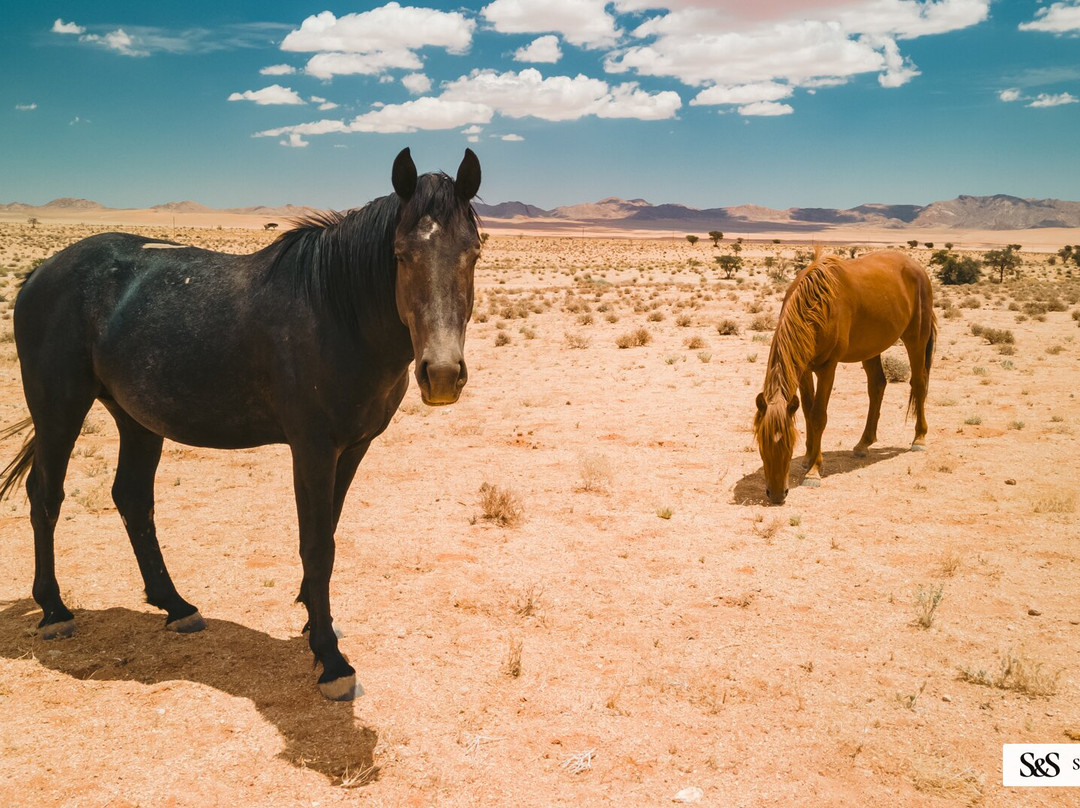
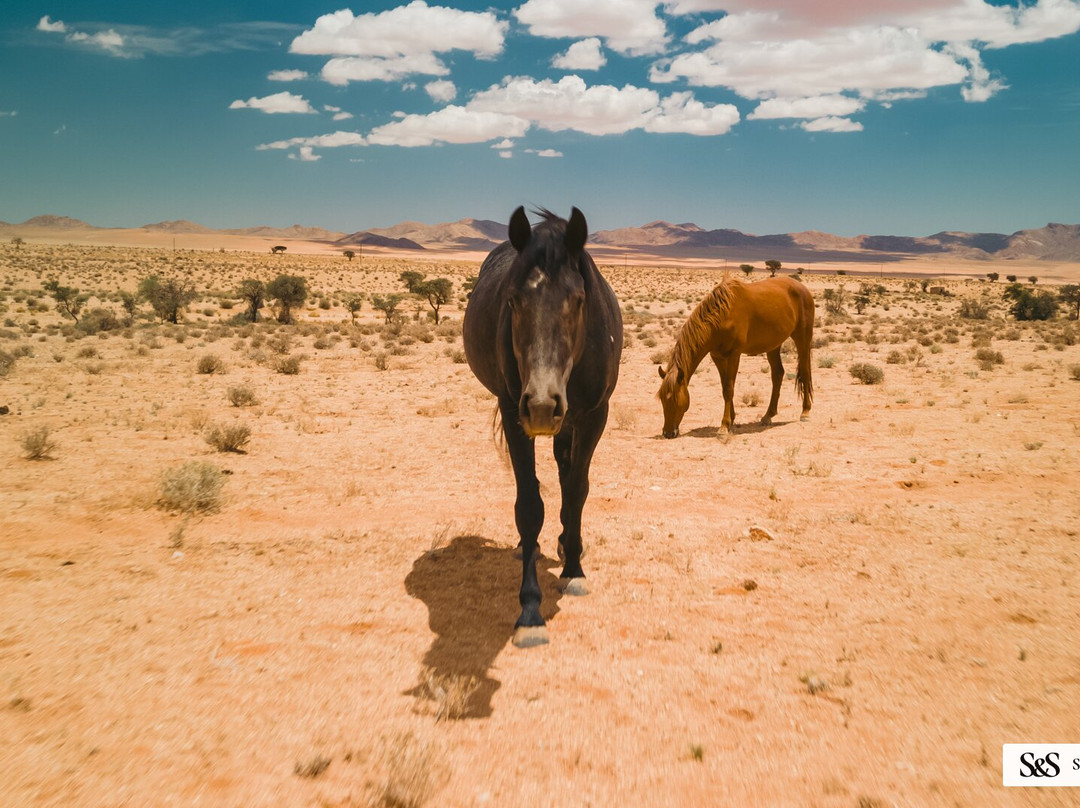
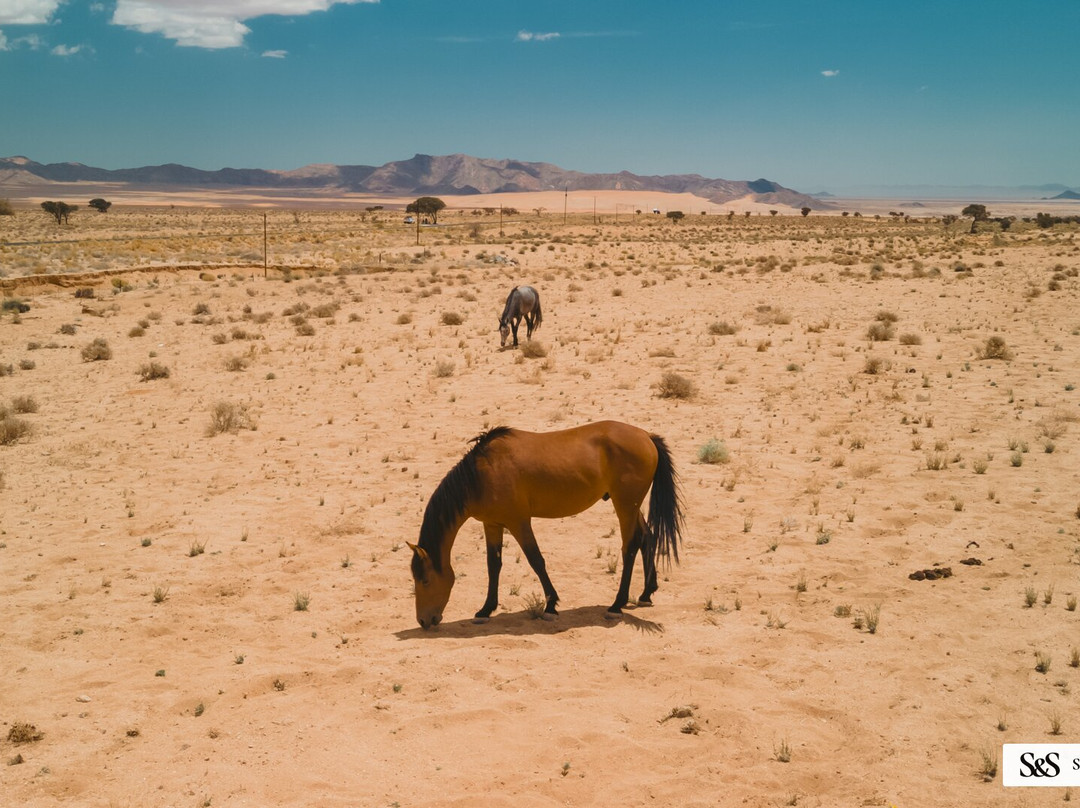
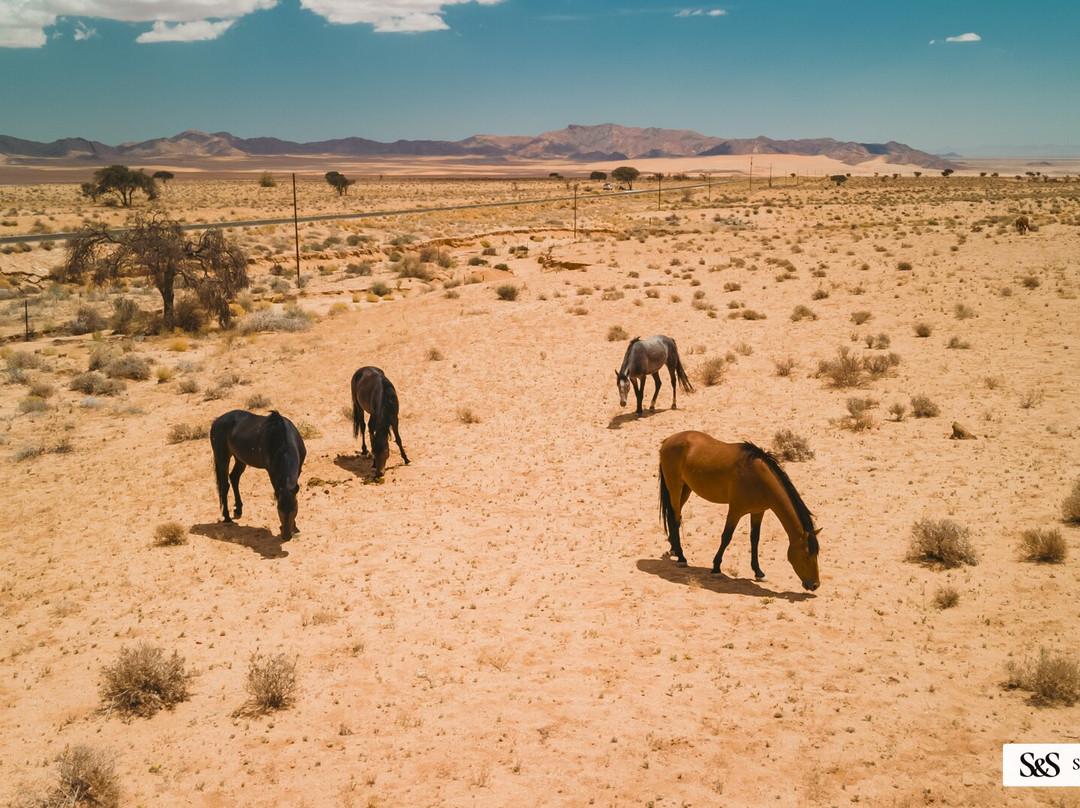
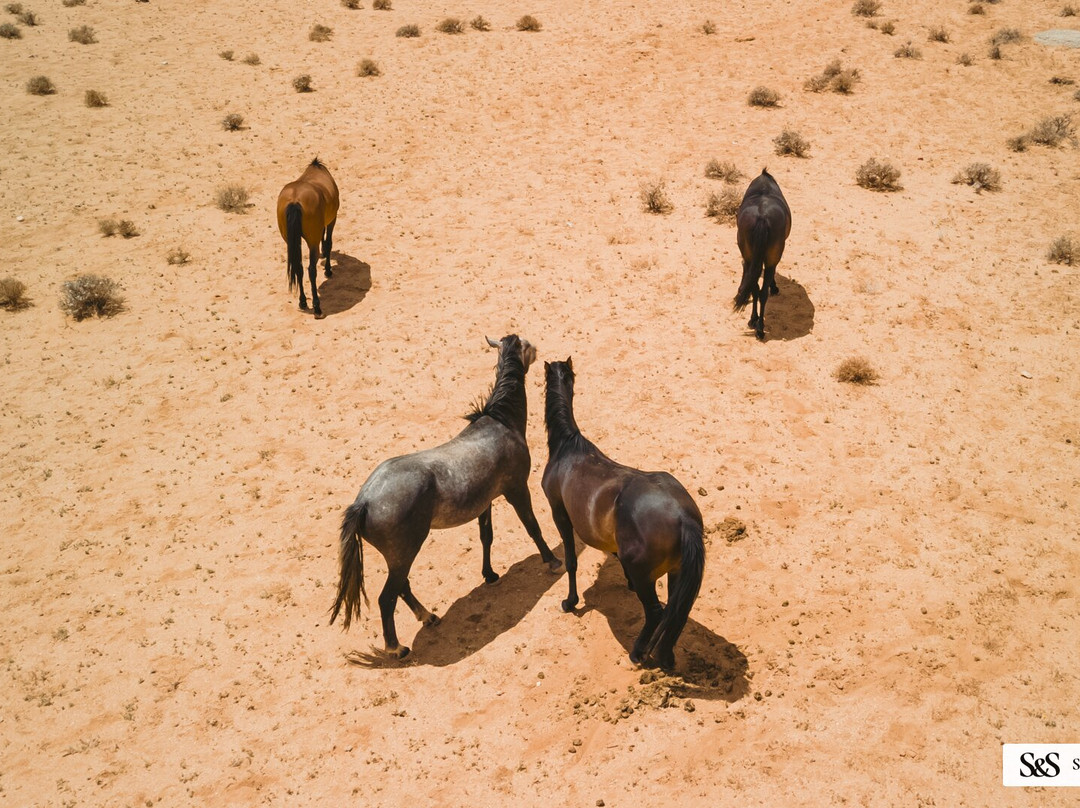


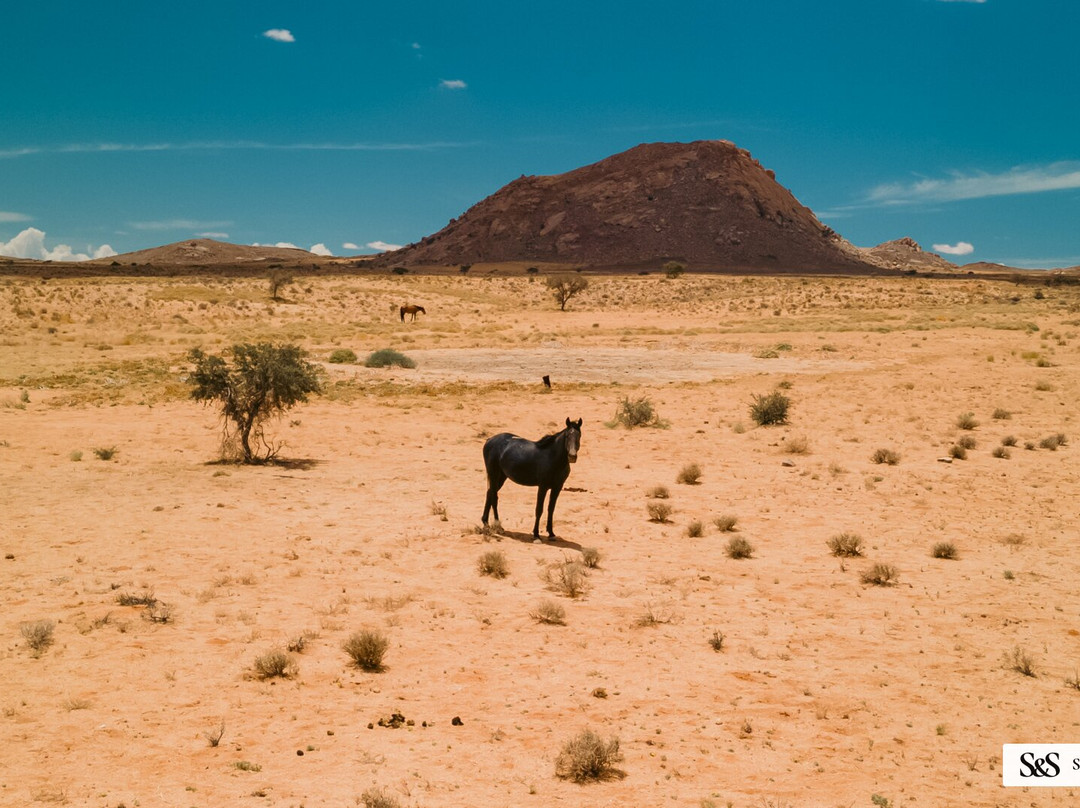
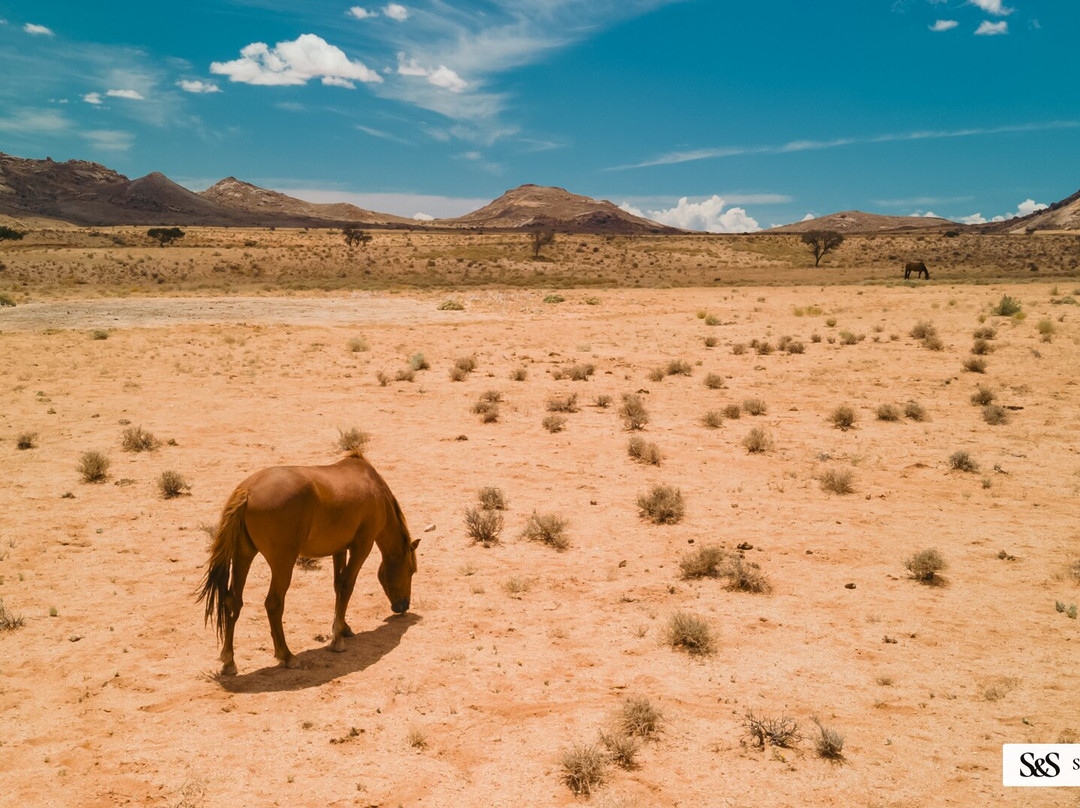

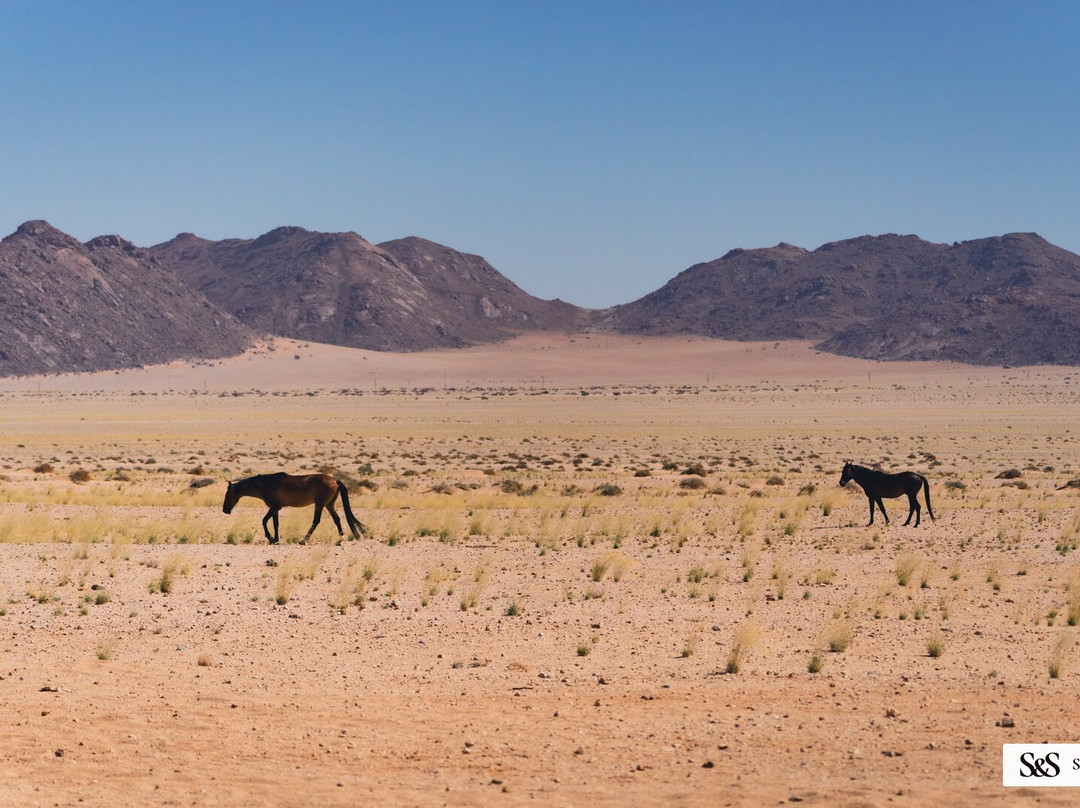
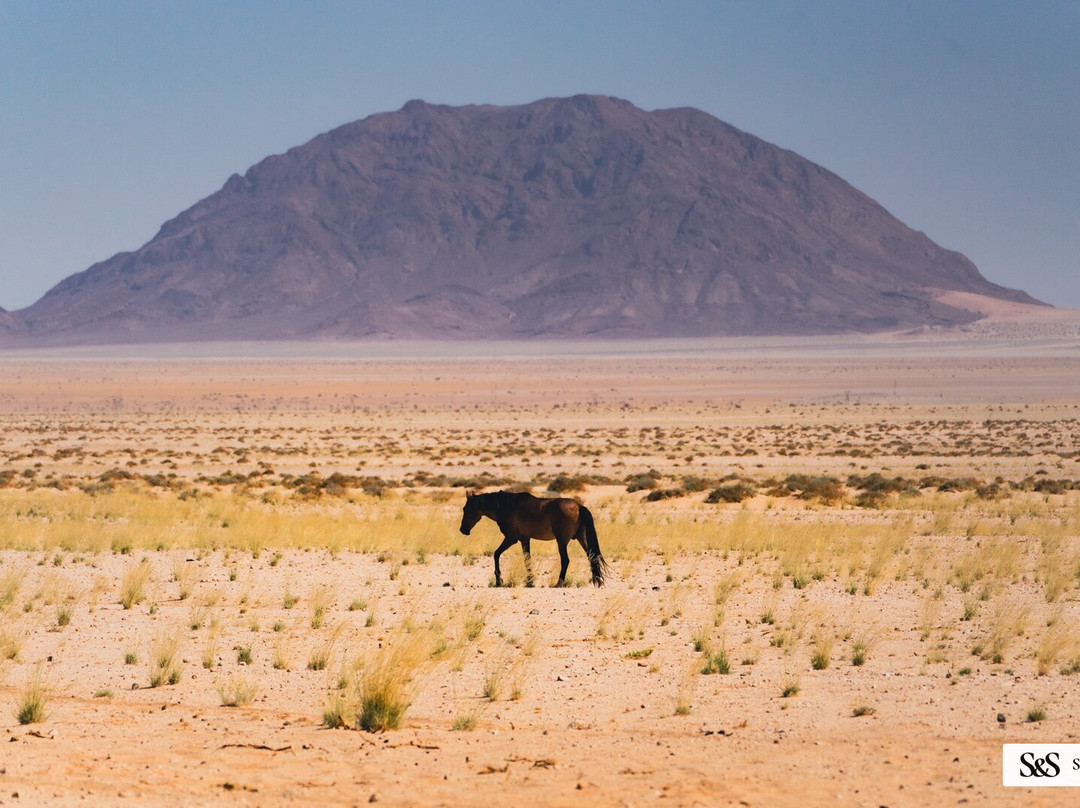
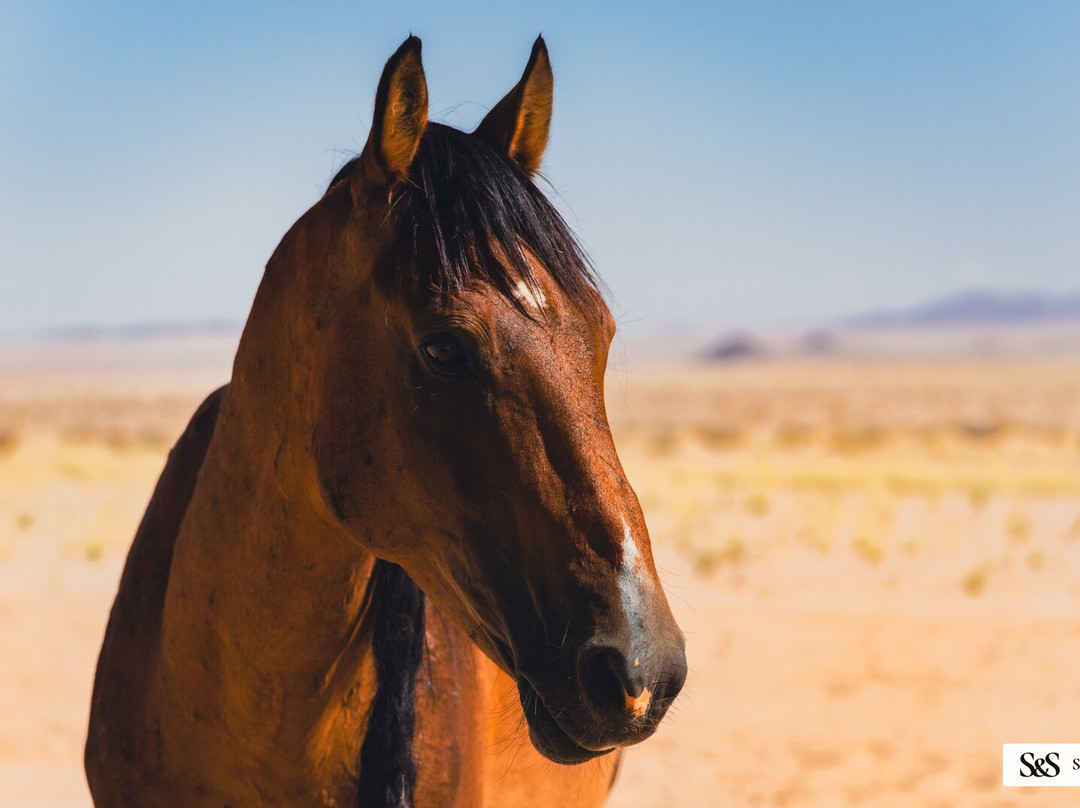
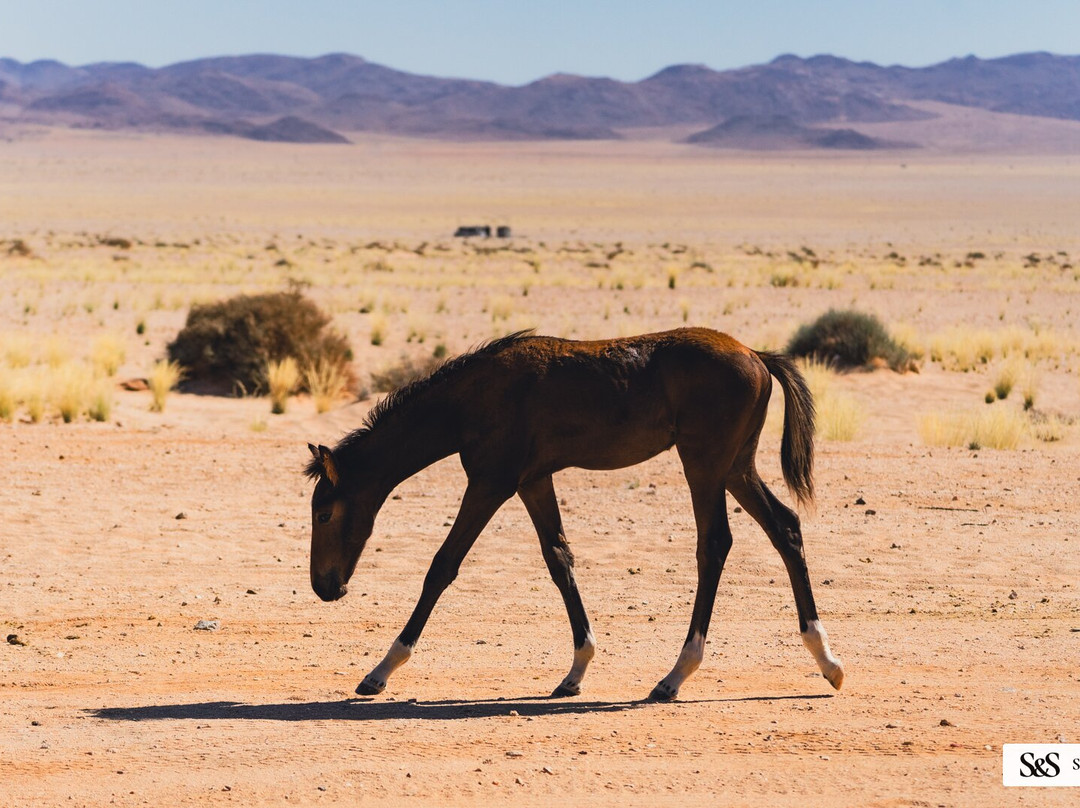
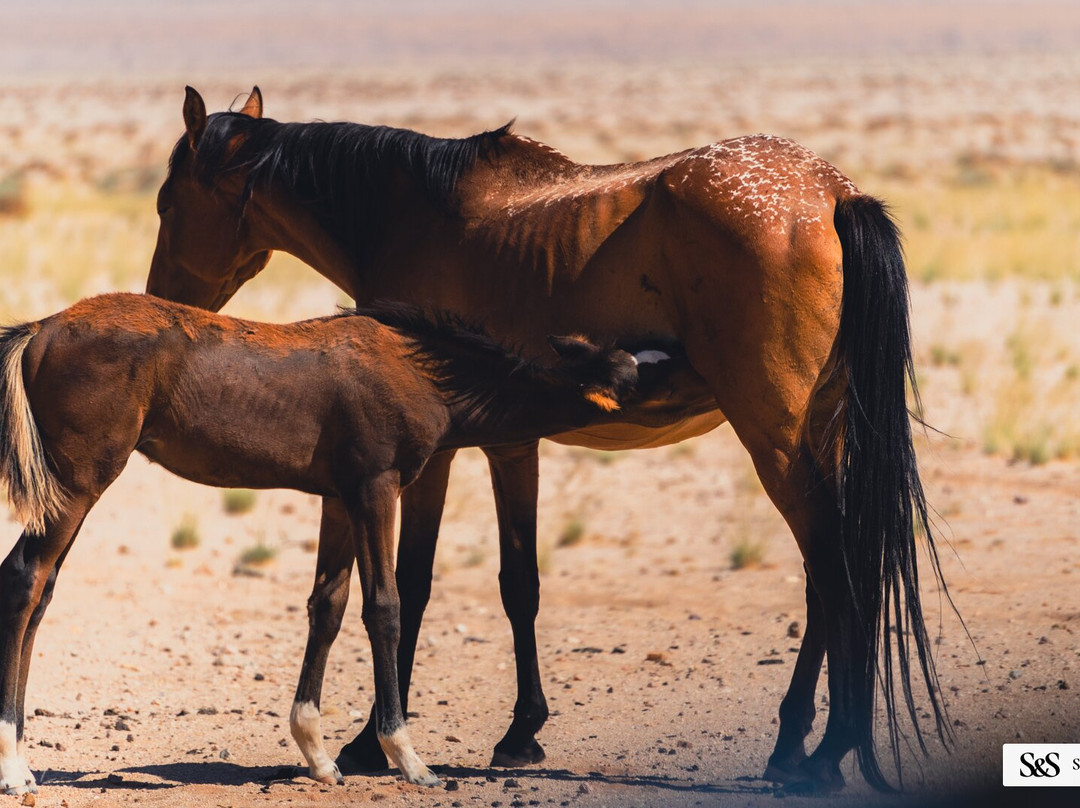
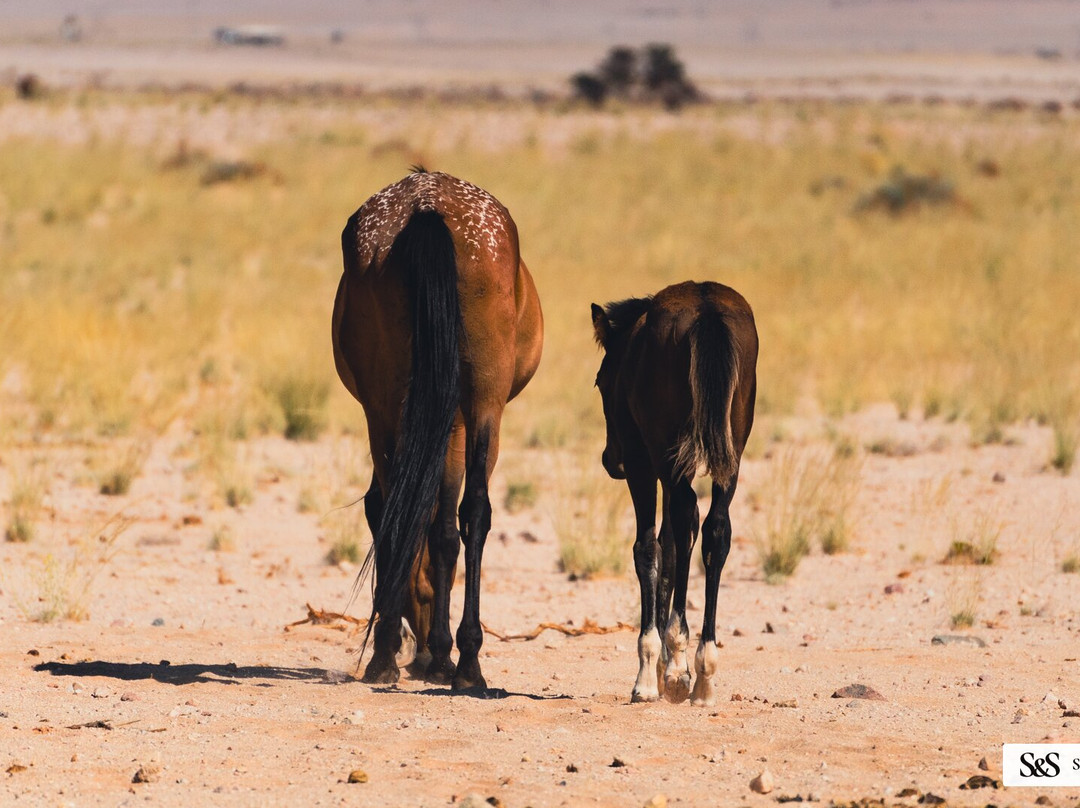
此点评仅代表旅行者个人的主观意见,并不代表TripAdvisor以及其合作方的意见。
关于我们
|
新闻动态
|
商务合作
|
会员中心
|
业主中心
|
业主通
|
常见问题
|
意见反馈
|
联系我们
|
营业执照
© 2025 Tripadvisor 版权所有。
使用条款 |隐私政策 |网站工作原理
部分照片由 VFM Leonardo 提供。
* Tripadvisor不是旅行社,也不是旅游预订服务代理商。我们提供免费、客观、公正的旅游资讯服务。 (显示更多)
TripAdvisor LLC 既不是预订代理商,也不是旅游运营商,不会向网站用户收取任何服务费。 按照规定,在 Tripadvisor 发布机票价格、游览和旅行套餐的合作伙伴(航空公司、旅行提供商及预订代理商),其标价须包含所有费用和附加费用。 例如, 机场出入境税费、消费税与其他服务费、手续费、杂费及附加费用。 当您向我们的某个合作伙伴进行预订时,请务必查阅他们的网站以了解当地行政部门要求的所有适用费用的具体情况。 除非另有说明,机票价格通常指的是一个人的价格(以人民币计)。
为方便起见,TripAdvisor LLC 根据从我们的预订合作伙伴获取的空房率计算每个酒店的均价。 对于游览和景点来说,所显示价格通常是每位成人的最低可用价格。 对于列出的任何旅行套餐或优惠,TripAdvisor LLC 无法保证任何特定的费率或价格。 此外,酒店均价每晚会更新,并以您的首选币种表示(使用现行汇率)。 由于这些已换算的价格是预估价格,因此,有关具体金额和币种请与预订网站进行核实。
此外,TripAdvisor LLC 无法保证我们网站上宣传的价格随时有效。 标价可能需要预订一定天数才能生效,或有不可用日期、使用条件或限制。
TripAdvisor公司对外部网站的内容一概不负责。优惠价格中不含税和其他费用。
ICP证:沪B2-20200433
沪ICP备20013175号
 沪公网安备31010502005427号
沪公网安备31010502005427号鹰程信息技术(上海)有限公司
货币/国家及地区
¥CNY
中国

